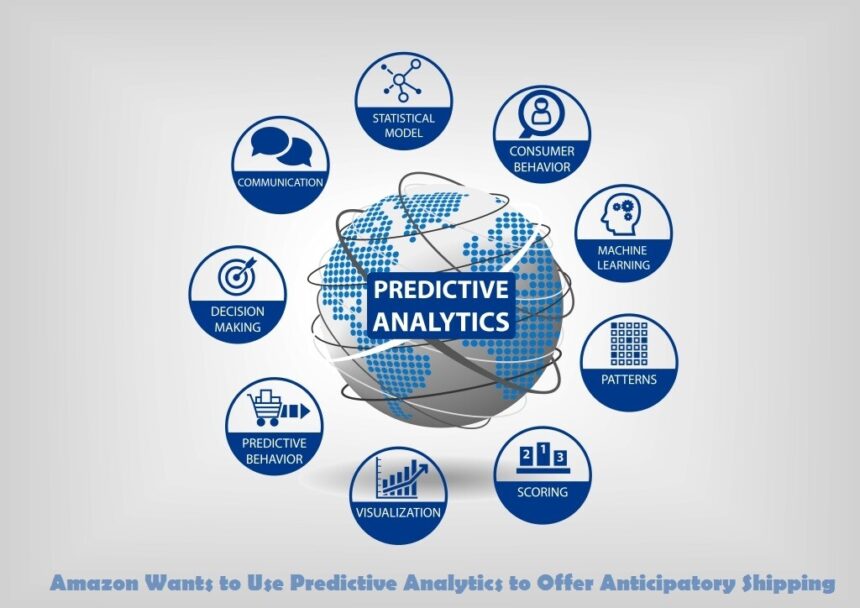Amazon is no stranger to innovative business strategies. Just consider their “robot workforce,” which automates and improves fulfillment and shipping processes for the retailer, and their autonomous flying delivery drones. It’s no surprise that they’re looking into more innovative mechanics, as revealed by a recent patent the company obtained.
The technology or process they’re preparing to deploy is called “anticipatory shipping.” It’s designed to send out products or items to select customers even before they place an order. For the most part, it’s not going to work like you’d expect — the items aren’t being sent directly to customers, but rather to a shipment hub.
How Will Anticipatory Shipping Work?
Paired with predictive analytics tools and a massive trove of Amazon customer data, the anticipatory shipping process will ensure popular items remain in an effective limbo to cut down on fulfillment times.
When customers in a particular area order a product, it will be sent from a shipping hub — or where it’s stored on nearby trucks — in a much shorter timeframe. The goods may even be stored on pallets in smaller, strategically placed warehouses until customers are ready to order.
The company will base locally stored inventory on area-specific stats such as previous orders, basket or shopping cart contents, customer wish-lists and even popular regional listings. It’s likely it will also integrate with Amazon’s Alexa platform, which allows you to order products automatically or on a schedule. Think of receiving toilet paper or paper towels shortly after you inform Alexa that you’ve run out. The only difference is the products reach you much faster than if they were leaving a conventional fulfillment center.
To put it into perspective, imagine realizing you need a particular item and heading to your computer or picking up your phone to order it on Amazon. Normally, you’d wait days for said items to reach your doorstep. But with Amazon’s new shipping mechanics, the item arrives within minutes or hours.
Will It Work?
While the concept is certainly innovative, it’s not clear how everything is going to work out. That is, there could be some major issues lurking under the surface.
For starters, the kind of predictive analytics and proactive fulfillment Amazon is planning is not backed by an exact science. It would be entirely possible for them to fudge things up and send a huge shipment of a product or item to an area where it’s not in demand. This is no doubt risky and could spell disaster in certain cases — namely, if the goods involved are time-sensitive or perishable.
In the patent, Amazon mentions this issue expressly by saying that in the event items are shipped to a customer who didn’t want them, they’ll be allowed to keep it for free, in an effort to “build goodwill” and trust. It sounds great on paper, but what about when customers start browsing items or adding them to their cart, foregoing actually spending money because they’re expecting items for free? Then again, it’s a little early to say whether or not such a thing would happen. Maybe Amazon wouldn’t provide items free as often as we’re thinking. Keeping the frequency low would ensure customers still spend money on what they want.
Also, GTG seems to think Amazon’s new plan will completely disrupt product shipping, fulfillment and logistics management in many industries. If it does work, it will alter the landscape significantly and encourage many other retailers and e-commerce brands to come up with something similar. This is obviously beneficial in many ways for consumers, but not so much for other businesses. It’s likely to be costly and time-consuming to deploy and enable similar policies.
Whatever the case, it’s not all cupcakes and rainbows.
What Does This Mean for the Consumer?
Well, if it all works as advertised, customers will benefit immensely. They’ll receive items faster and shipping costs (at least in theory) should decrease. Not to mention: they’ll get the occasional free item or two if Amazon sticks to their guns. And, as previously discussed, other brands will follow suit to cash in on Amazon’s success. They’ll have to keep up if they want to compete too.
It’s difficult to imagine this program could be rolled out everywhere, at least initially. We’ll probably see it in select regions or major locations first as a trial period. At least Amazon is putting all that data and money they’re collecting to good use, right?







